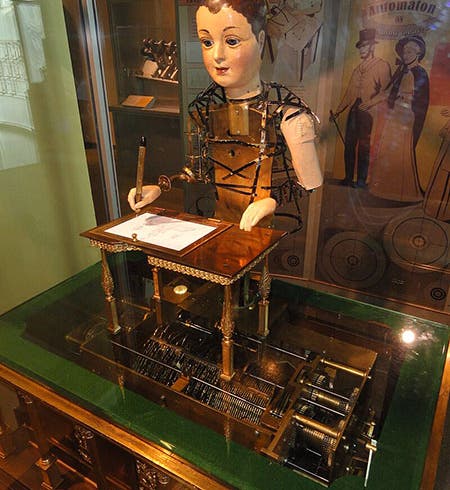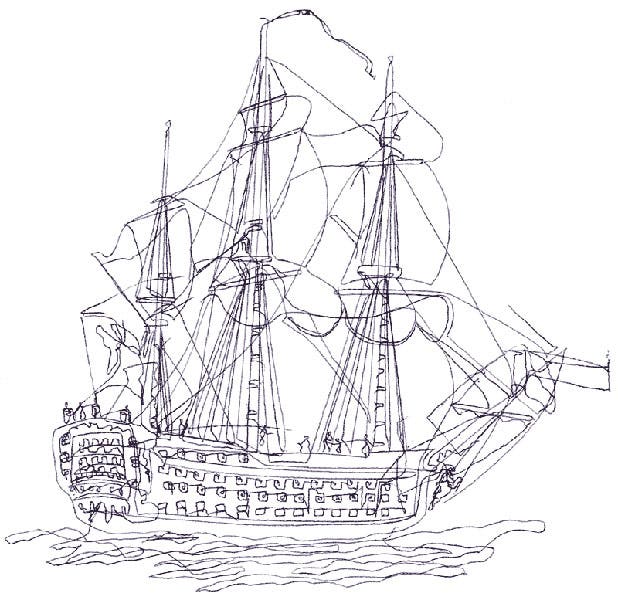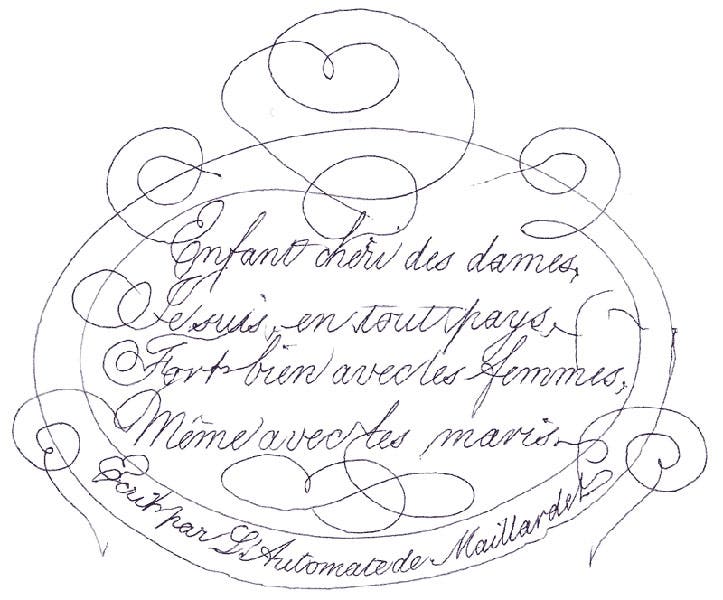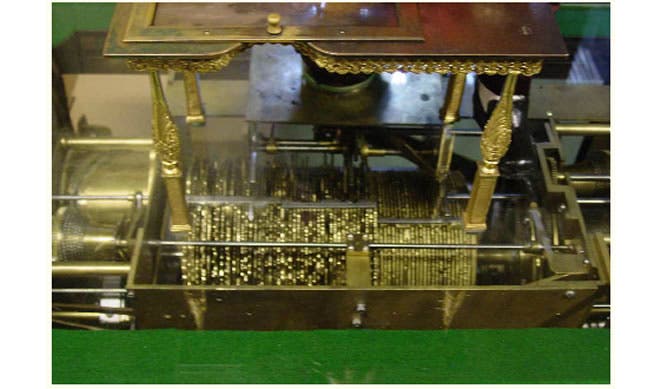Scientist of the Day - Henri Maillardet
On Nov. 9, 2005, Brian Selznick, who was working on his book, The Invention of Hugo Cabret, sent an email to Andrew Baron, a paper engineer (meaning he designs pop-up books) and a restorer of things mechanical. Selznick's book, published in 2007, tells the story of a boy who finds a broken automaton in the trash and slowly brings it back to mechanical life. In the process of his research, Selznick had discovered a non-operating automaton in the Franklin Institute in Philadelphia. The Institute had acquired it in 1928 and knew nothing about its origins; it had been damaged in a fire, and the Museum was interested in restoring it to working order. Selznick asked Baron in the email if he would give it a try, and Baron agreed.
By the summer of 2007, Baron and curators at the Institute had succeeded in reconstructing the marvelous mechanical boy, who was in fact a mechanical artist. Using an elaborate system of cams, the automaton could draw four pictures and write three poems. One of the poems ends: “written by the automaton of Maillardet” (in French), revealing the maker, a turn-of-the-18th-century French mechanical wizard, Henri Maillardet. The automaton was unveiled on Nov. 4, 2007; here is a video of the event, featuring Selznick and Baron. The writing boy has since become the centerpiece of a permanent exhibition on automata at the Franklin Institute.
Not much is known about Maillardet, except that he worked in France in the Golden Age of automata, the period between 1770 and 1830. He built this automaton around 1800. It was later acquired by the showman Johann Nepomuk Maelzel and taken on tour; it was often referred to as Maelzel’s “Juvenile Writer,” until the automaton itself revealed the true maker in 2007. When Maillardet was alive (he died in 1830), he would regularly stage exhibitions of his various automata in London; there survive handbills for several of these (one of which, dated 1801, mentions the writing boy), and one engraving of an exhibition, an aquatint, dated 1826, and now in the British Museum (fifth image). You can see the writing boy at the right in the print.
Both Wikipedia and the Franklin Institute show all 7 drawings that the automaton can make on their websites, here for Wikipedia, here for the Franklin Institute. We show two of them in this post (second and third images). The drawings and poems are amazing but far from perfect, as one might expect from a mechanical scrivener. But rare book dealer Jeremy Norman, not so long ago, acquired a drawing made by Maillardet’s automaton in 1810, when it was brand new, and the quality of the drawing is noticeably better, before the brass cams began to wear down (sixth image).
For me, the most amazing feature of the Maillardet automaton is the cam-set (fourth image). I don’t know how many cams there are (it looks like at least 60), and each one is carefully shaped so as to raise and lower a sensing finger as the cam rotates. You can get a better view of the cams at this website (where the photos are under copyright, so I could not use them). There are three fingers that ride on the cams, which produce side-to-side, back-and-forth, and up-and-down motion of the pen (some of the other cams control the movement of the eyes and head). How this was all designed is beyond my ken. It is often said that the writing boy has the largest cam-based memory ever constructed, and I would not doubt it.
The best video of the Maillardet automaton in action is one that appeared on CBS Morning News when the automaton was first restored. You may view it here. If some of this looks familiar, you have probably seen the film version of Selznicks's book, Hugo (2011), where there is a drawing-automaton scene that was clearly inspired by the Franklin Institute automaton. Clips of the automaton scene don’t seem to stay up on YouTube very long, so I won’t link to any one clip, but you can take your choice from the ones that show up from this search.
I understand that the Franklin Institute automaton is always on display, but is only shown in action a few times a year. I do not know how those times are announced.
William B. Ashworth, Jr., Consultant for the History of Science, Linda Hall Library and Associate Professor emeritus, Department of History, University of Missouri-Kansas City. Comments or corrections are welcome; please direct to ashworthw@umkc.edu.












